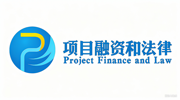Remarks by President Biden at the Partnership for Global Infrastructure and Investment Meeting
Grand Prince Hotel Hiroshima, Japan
5:42 P.M. JST
THE PRESIDENT: Well, thank you very much, Mr. Prime Minister.
Nearly one year ago, we made a commitment to commit not only to build a better infrastructure but to build a better future, one rooted in opportunity, security, and prosperity for all.
And thanks to all the public and private partners around this table and many more around the world, we’ve already begun to deliver.
Together, we’ve initiated quality and sustainable infrastructure projects across Africa, Asia, and the Americas. And we’re strengthening our shared climate security, health security, and food security, and economic security. All four are critical.
We started to engage more private investors to better de-risk and leverage additional capital. And I see at least two from the United States here that are de-risking a lot. (Laughs.)
And I’m proud to announce that the United States has already mobilized more than $30 billion in investments to date. And we’re just getting started.
Together, we have a lot of work to do to close the infrastructure gap and for — in low- and middle-income countries. And as we begin the next year, our partnership — we need to find new ways — new ways to maximize investments — our investments.
That’s why, moving forward, the United States will enhance our focus on investing in key economic corridors. In practice, that means making game-changing investments in regions that could lead to positive impacts across multiple sectors in multiple countries.
We’ve already started working with our partners to make this happen. For example, in Sub-Saharan Africa, the U.S. Development Finance Corporation is looking to invest in this first railway project on the continent. The rail line would extend from the western shores of Angola to the border of the DRC and Zambia, with the goal of ultimately reaching the Indian Ocean, connecting the continent east to west for the first time.
This project would not only quickly promote trade and create jobs. Over time, in my view, it will strengthen supply chains, incentive — and incentivize investments in agriculture, and promote food security. And it’s going to enable, in my view, us to better access clean energy and digital connectivity across the entire region, creating more security, more prosperity, more opportunities for generations to come.
That’s what our focus on the key economic corridors is all about: investing in near-term solutions that pay long-term dividends.
It’s not only in Africa. We’re starting similar work in Costa Rica, Ecuador, Indonesia, and other places I won’t bore you with now.
And let me close with this. During the G7 meeting, we’re addressing a range of issues: climate change, food security, gender inequality, economic resilience, digital connectivity, and global security. We’re tracking these challenges together, and I think we’re beginning to make some important progress.
But if we don’t move to do more to strengthen infrastructure in low- and middle-income countries, if we don’t do more to help nations deliver opportunities and prosperity for their people, our impact is going to be limited.
That’s how the crit- — how critical this partnership is. That’s how important our investments are.
So, today, as we began the PGII’s second year, let’s all find ways to maximize our investment — maximize it — because it will do a lot not only for that particular undertaking but it has an impact across the entire regions, in my view, and — to unlock even more public and private capital.
And together, let’s recommit to showing that democracies can deliver. Let me say it again: Democracies can deliver. We have to deliver to people around the world.
I want to thank you all for your partnership and leadership on this vital issue.
And now I’m going to turn it back to the Prime Minister. Thank you.






